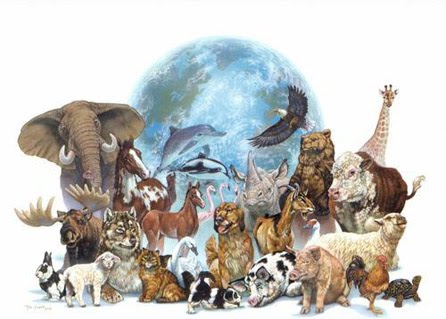
Climate change, brutal hunting and relentless habitat destruction have taken these beings away from Earth for all time
THE GOLDEN TOAD
Found once in the cloud forests of northern Costa Rica, this tiny creature, also known as Incilius periglenes, went extinct in 1989. Famed for its glowing skin, the toad reportedly died out as air pollution and climate change impacted rainfall in its habitat. The 1986-87 El Nino phenomenon caused a drought across the region, drying up all the moisture the Golden Toad needed to both burrow and survive.

PINTA GIANT TORTOISE
Found abundantly in Ecuador, the Chelonoidis abingdonii or the giant Galapagos tortoise went extinct in 2012. The large, shy creature is said to have been driven to extinction by increasingly polluted waters, habitat destruction, consumption of plastic waste, hunting and trapping in trawler fishing nets.

ORANGE UPPERWING MOTH
The vibrantly coloured, lightly speckled Jodia croceago moth was once found in abundance across Britain. However, growing industrialisation over meadow and pasture lands, and the use of chemical pesticides drove the species reportedly into extinction by the 2000s.

CHINESE PADDLEFISH
One of the largest fish in the world, the Psephurus gladius could grow upto 23 feet in length, swimming in the freshwaters of the Yangtze River in China. However, this remarkable looking species, with a sword-like snout used for scouting the river bed and seeking prey, was driven to extinction by the mid-2000s as its habitat was destroyed by the construction of the Gezhouba Dam, barricading the fish from their only spawning grounds upstream.

GLAUCOUS MACAW
Once emblazoning the skies of Argentina, Uruguay and Brazil with its beautiful blue plumage, the Anodorhynchus glaucus was pushed into extinction by the 1990s. It faced severe threats from hunters as well as the loss of its habitat with growing deforestation for agriculture and cattle farming, human beings persistently cutting down the Yatay palm trees which provided nourishment in the form of nuts eaten by this bird species.

CATARINA PUPFISH
Abundant in the wetlands of Nuevo Leon, Mexico, the Megupsilon aporus went extinct in the wild in 2014.
Its habitat was destroyed by the extraction of groundwater for industry and farming and ecological changes caused by the building of dams and the diversion of streams.

JAPANESE SEA LION
Once found in the ocean around Japan and Korea, the Zalophus japonicus was driven to extinction by the 1980s due to relentless hunting for its skin, internal organs, whiskers and oil.

WEST AFRICAN BLACK RHINOCEROS
Once abundant across southeast Africa, the grand rhino, also called Diceros bicornis longipes, weighed about 1,200 kg and sported two horns. The hunt for these horns, believed to have medicinal properties, led to the species being ground out, finally succumbing to extinction in 2011.

BISHOP’S OO
The glossy black Moho Bishopi bird, once found in the forestlands of Hawaii, was famous for its twonote ‘took-took’ sound which could be heard over miles. Confronted by hunting and the destruction of its forest habitat for commercial building, the Bishop’s Oo died out by the 1980s, jazz composer John Zorn apparently naming an album O’o after the musical bird.

JAVA LAPWING
The long-legged Vanellus macropterus wading bird, sporting a remarkable plumage, was once found across the marshes and deltas of Java, Sumatra and Timor.
Its habitat destroyed due to land clearance for industrial activities, the bird, pursued by hunters, died out by the mid-1990s. Research: IUCN, National Geographic, Scientific American, Birdlife International, ‘The Sixth Extinction’ (2015) by Elizabeth Kolbert

Matter referenced:
Elizabeth Kolbert, Times of India, Ahmedabad, Saturday, 18th January, 2020.
By: Dr. Bhawana Asnani.
Happy to see Reviews, Additions, Suggestions and Comments, further.

Very informative but could have been attached with pictures of these extinct species for better perceptions .
Thanks a lot mam, I have included the same. Kindly recheck.